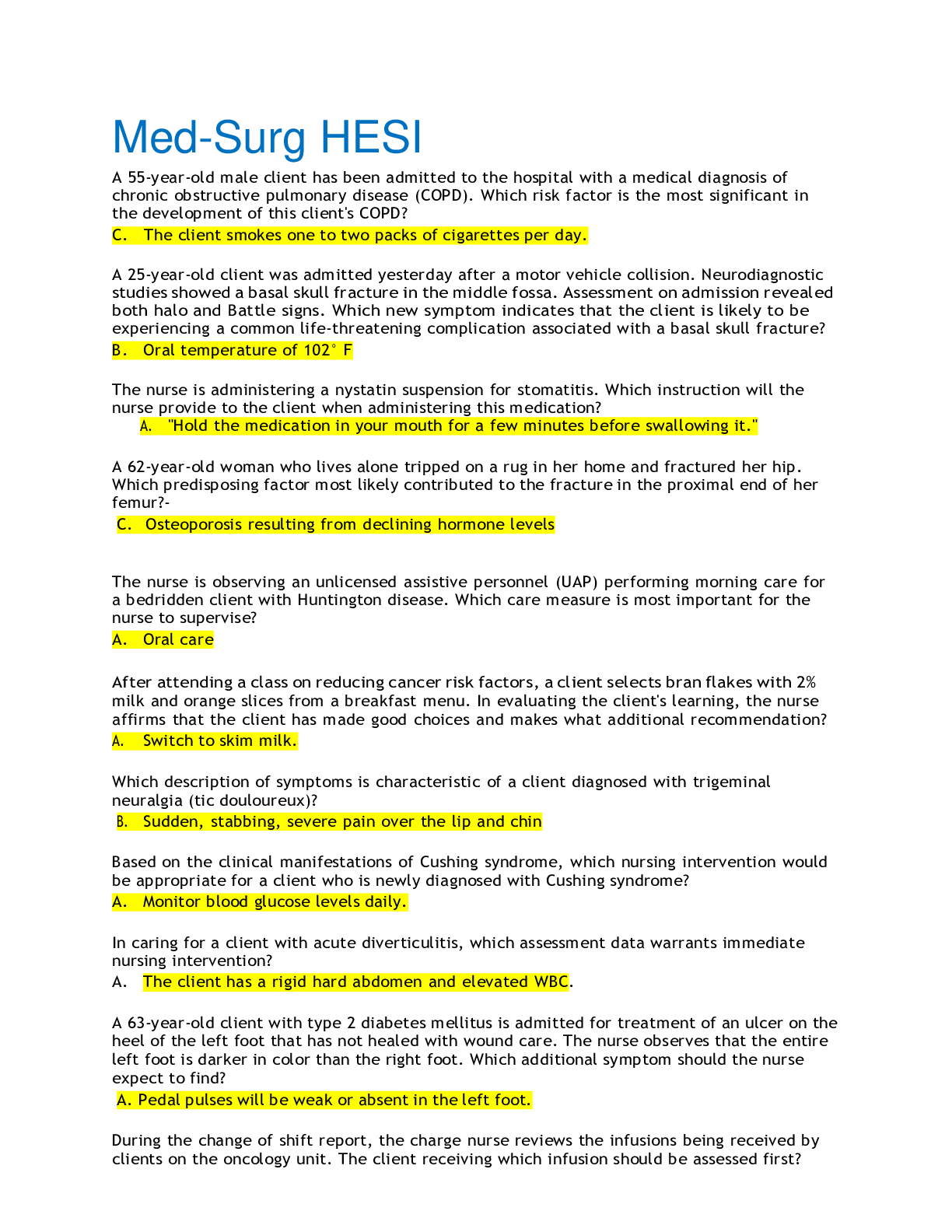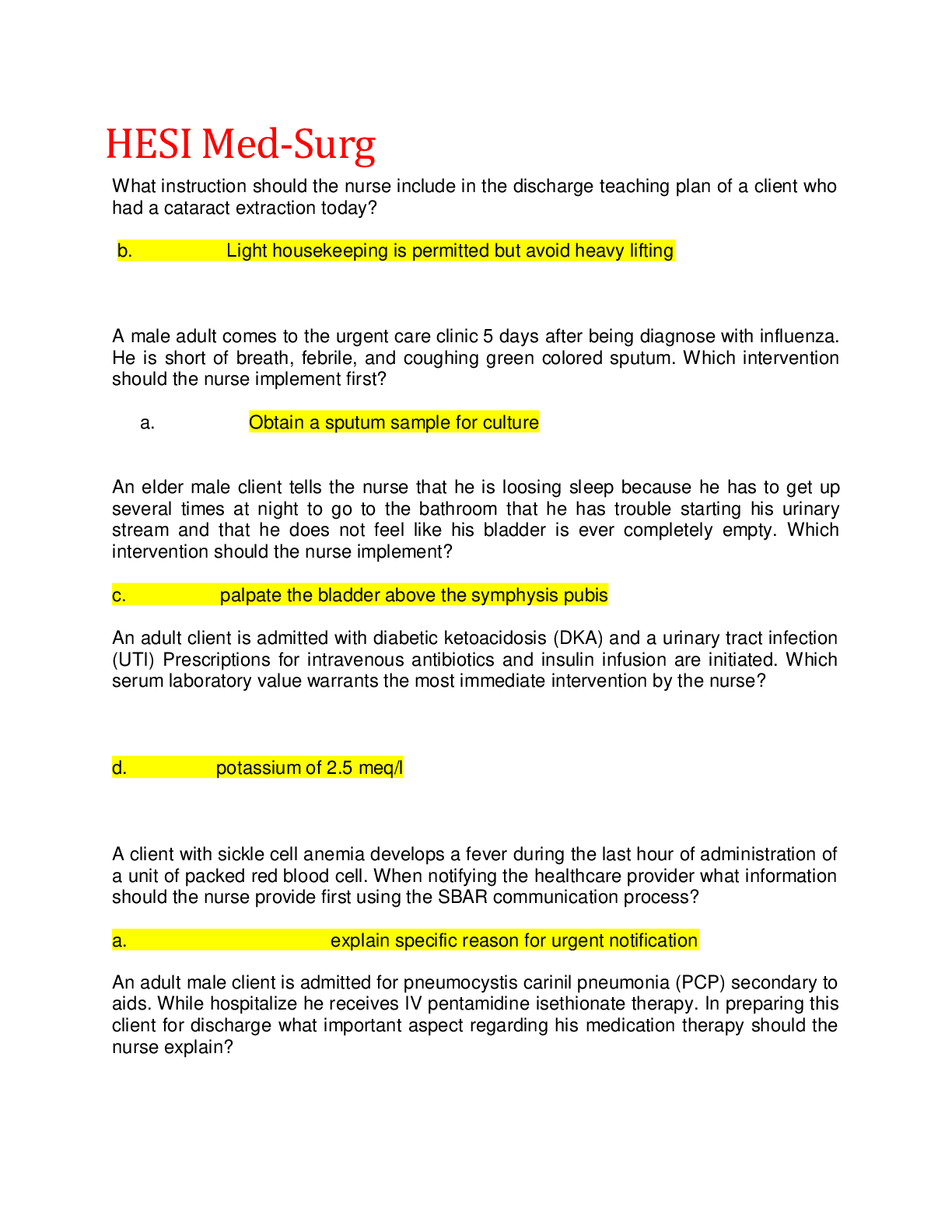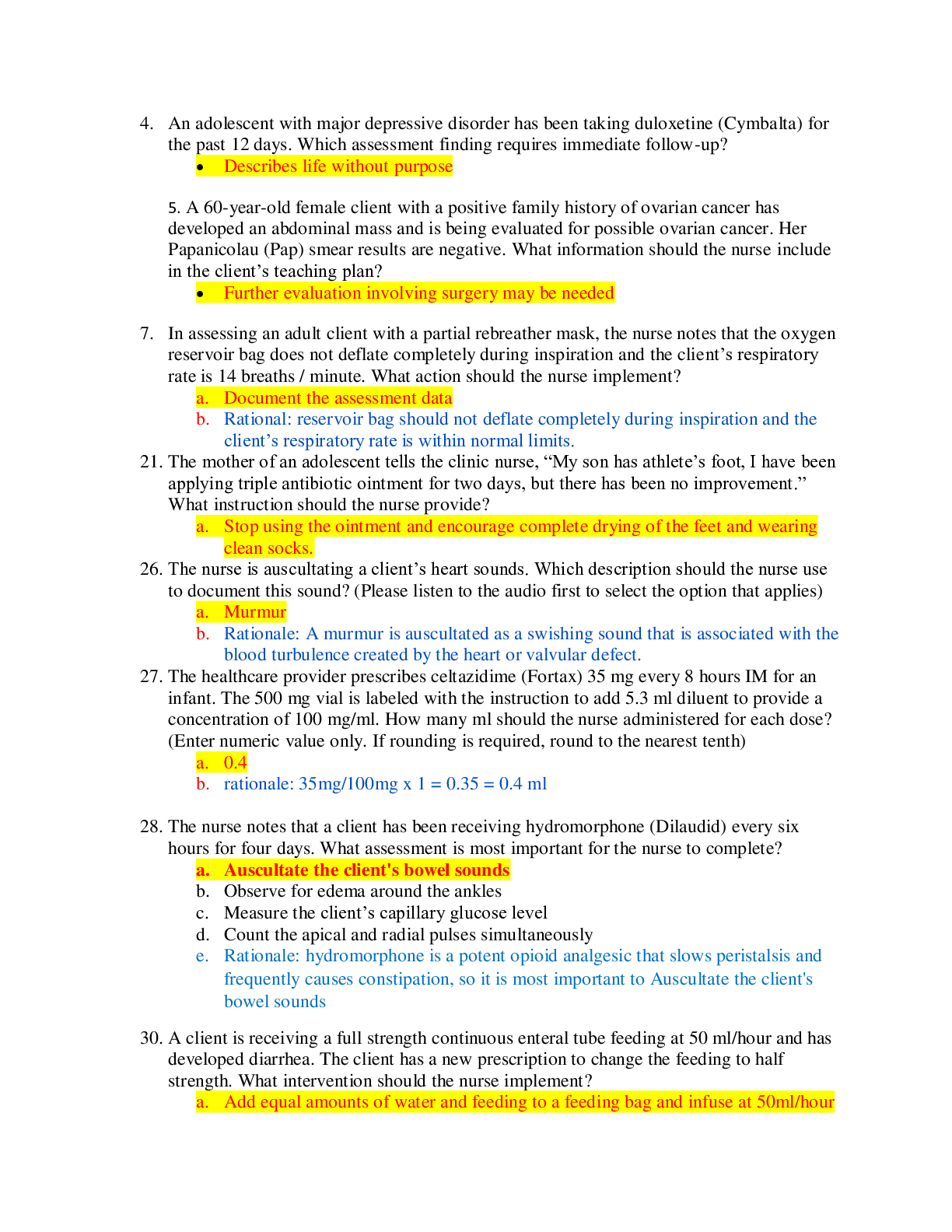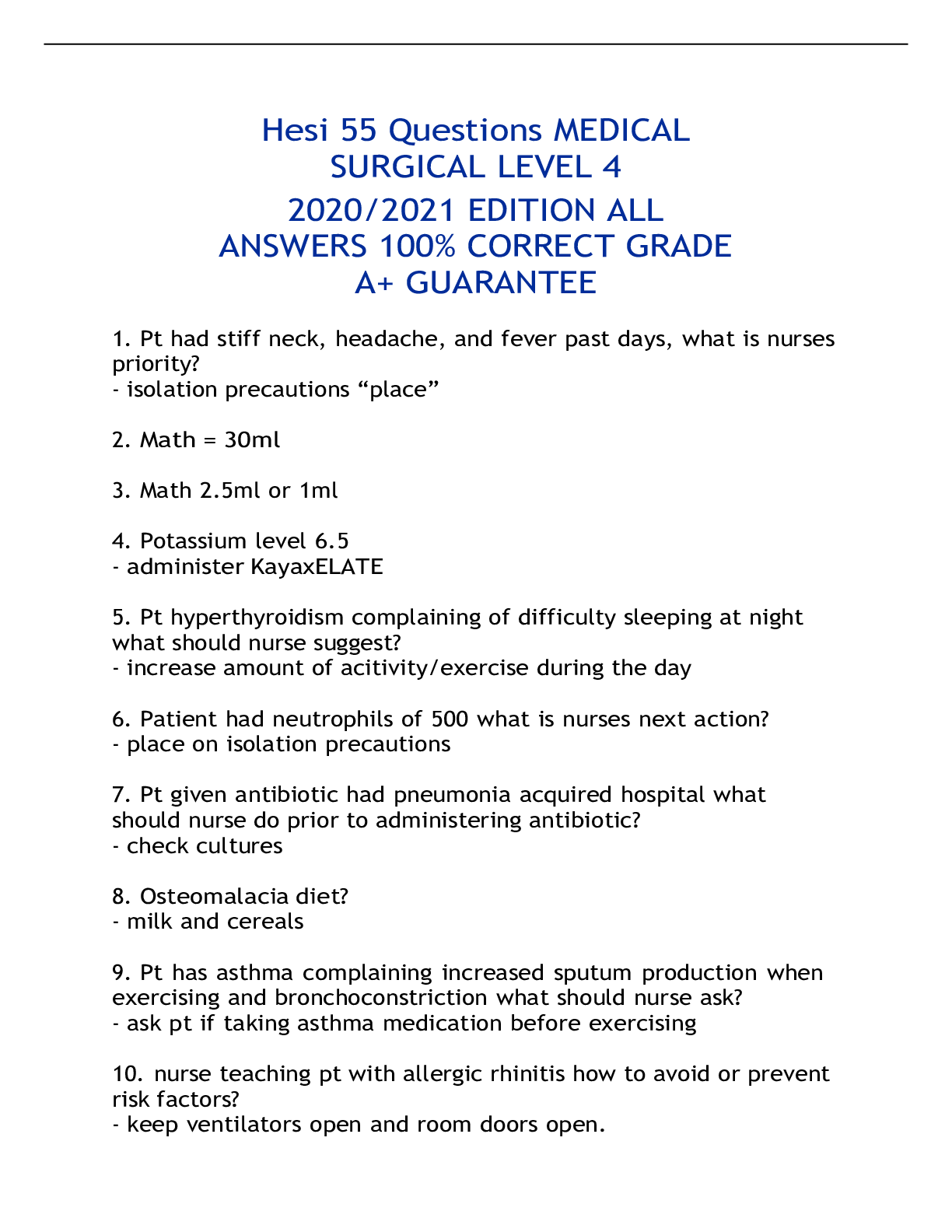*NURSING > HESI MED SURG > HESI MED SURGE EXAM (250 Q & A) (LATEST-UPDATE) 100% CORRECT ANSWERS, DOWNLOAD TO SCORE A (All)
HESI MED SURGE EXAM (250 Q & A) (LATEST-UPDATE) 100% CORRECT ANSWERS, DOWNLOAD TO SCORE A
Document Content and Description Below
HESI MED SURGE EXAM (250 Q & A) (LATEST-2020) 100% CORRECT ANSWERS, DOWNLOAD TO SCORE A 1) A female client with a nasogastric tube attached to low suction states that she is nauseated. The nurse asses... ses that there has been no drainage through the nasogastric tube in the last 2 hours. Which action should the nurse take first? A. Irrigate the nasogastric tube with sterile normal saline. B. Reposition the client on her side. C. Advance the nasogastric tube 5 cm. D. Administer an intravenous antiemetic as prescribed. 2)When assigning clients on a medical-surgical floor to a RN and a LPN, it is best for the charge nurse to assign which client to the LPN? A. A child with bacterial meningitis with recent seizures. B. An older adult client with pneumonia and viral meningitis. C. A female client in isolation wiht meningococcal meningitis. D. A male client 1 day post-op after drainage of a brain abscess. 3)Which description of symptoms is characteristic of a client with diagnosed with trigeminal neuralgia (tic douloureux)? A. Tinnitus, vertigo, and hearing difficulties. B. Sudden, stabbing, severe pain over the lip and chin. C. Unilateral facial weakness and paralysis. D. Difficulty in talking, chewing, and swallowing. 4)Which abnormal lab finding indicates that a client with diabetes needs further evaluation for diabetic nephropathy? A. Hypokalemia B. Microalbuminauria C. Elevated serum lipids D. Ketonuria 5) An older male client comes to the geriatric screening clinic complaining of pain in his left calf. The nurse notices a reddened area on the calf of his right leg that is warm to touch and the nurse suspects that the client may have thrombophlebitis. Which addition assessment is most important for the nurse to perform? A. Measure calf circumference. B. Auscultate the client's breath sounds. C. Observe for ecchymosis and petechiae. D. Obtain the client's blood pressure. 250) 39. Select all that apply. Which of the following are clinical manifestations of tension pneumothorax? A. Midline trachea B. Severe hypertension C. Progressive cyanosis D. A loud bruit on affected side E. Asymmetrical chest wall movement F. Subcutaneous emphysema in the neck [Show More]
Last updated: 2 years ago
Preview 1 out of 61 pages
 (1).png)
Buy this document to get the full access instantly
Instant Download Access after purchase
Buy NowInstant download
We Accept:

Reviews( 0 )
$13.50
Can't find what you want? Try our AI powered Search
Document information
Connected school, study & course
About the document
Uploaded On
Jun 08, 2021
Number of pages
61
Written in
Additional information
This document has been written for:
Uploaded
Jun 08, 2021
Downloads
0
Views
205


.png)





 (1).png)

 (1).png)
 (1).png)


